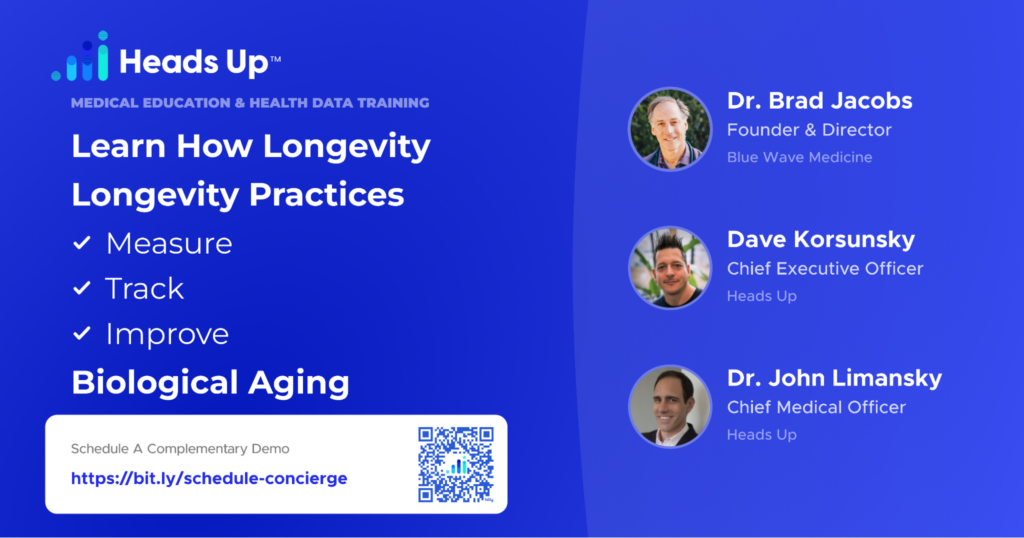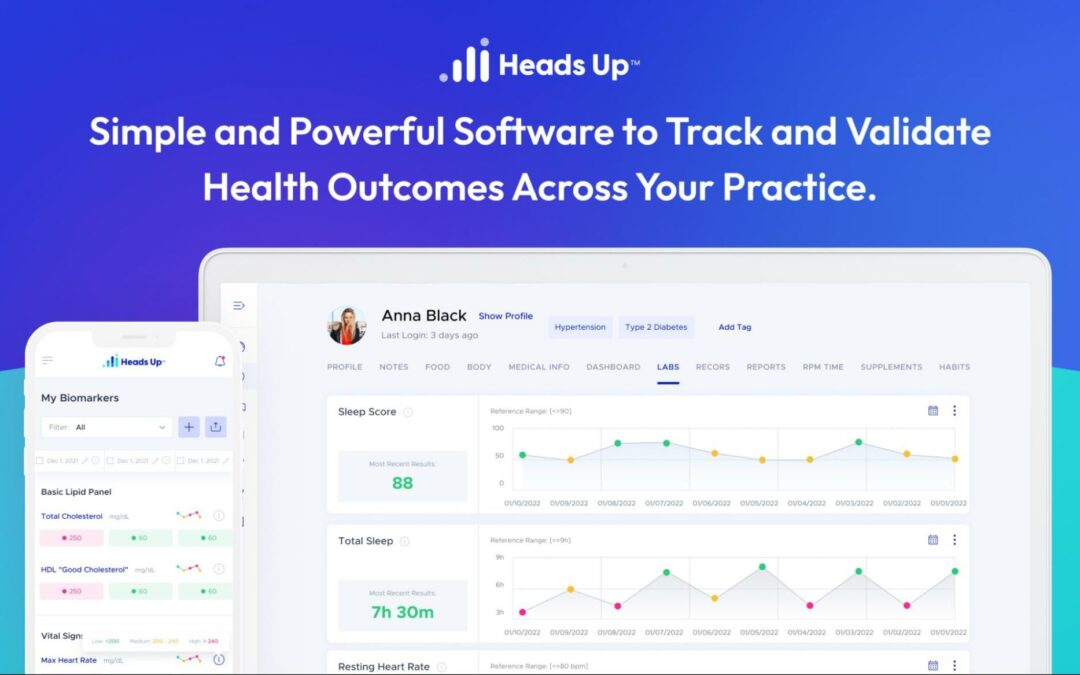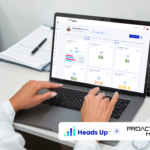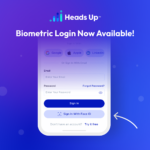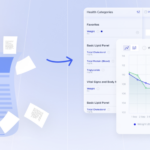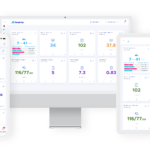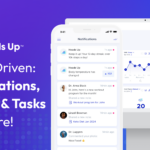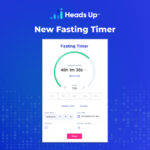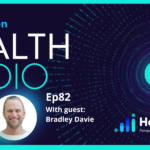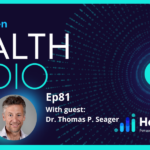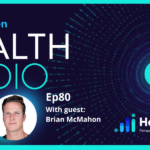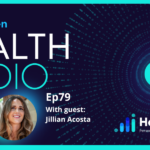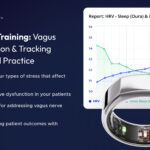Health Outcomes Overview
In the evolving landscape of healthcare, the ability to track and validate patient outcomes is critical for ensuring the effectiveness of interventions and improving overall practice management. Heads Up offers a simple yet powerful software solution that enables health professionals to monitor health metrics, track outcomes, and validate the success of treatments across their practice efficiently.
This article explores the features of Heads up, its benefits for healthcare including concierge medicine practices, integrative and functional practitioners, biohacking clinics, and longevity programs. Discover practical strategies for integrating it into clinical workflows to enhance patient care and validate outcomes.
Introduction
As healthcare moves towards more personalized and data-driven approaches, the need for robust tools to track and validate patient outcomes has never been greater. Heads up provides a comprehensive platform that simplifies the collection, analysis, and interpretation of health data, making it an ideal solution for healthcare practices looking to improve patient care and validate the effectiveness of interventions.
Overview of Heads up
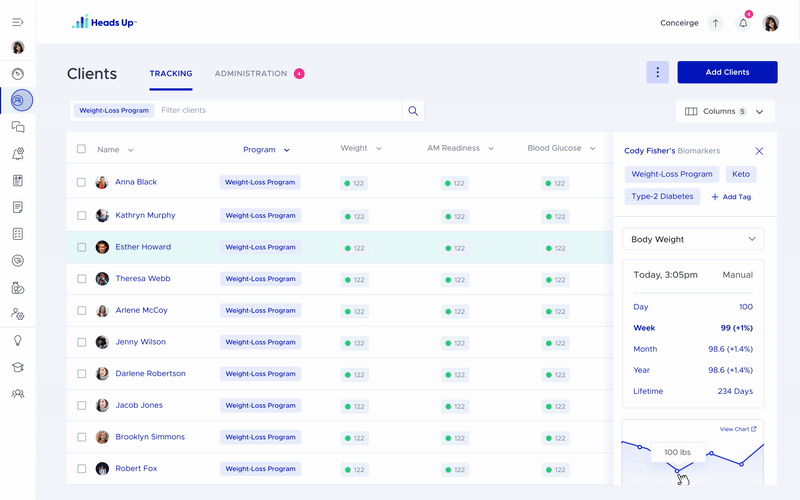
What is Heads Up?
Heads Up is a digital health platform designed to integrate and analyze health data from various sources, including wearable devices, lab results, and health apps. It provides a unified interface for tracking key health metrics and generating insights that support personalized health management.
Key Features of Heads Up
- Data Integration: Heads Up integrates data from multiple sources, including electronic health records (EHRs), wearable devices, lab tests, and health apps. This allows for a comprehensive view of patient health and facilitates continuous monitoring.
- Customizable Dashboards: The platform offers customizable dashboards where healthcare providers can track specific health metrics relevant to each patient. This enables personalized health management and easy monitoring of progress over time.
- Advanced Analytics: Heads Up provides advanced analytics tools that help identify trends, correlations, and actionable insights from health data. This supports data-driven decision-making and enhances the effectiveness of clinical interventions.
- Health Reporting: The platform allows for the generation of detailed health reports that can be shared with patients and other healthcare providers. These reports help in validating the effectiveness of treatments and interventions.
- Secure Data Management: Heads Up ensures that all health data is securely stored and managed, complying with industry standards for data privacy and security.
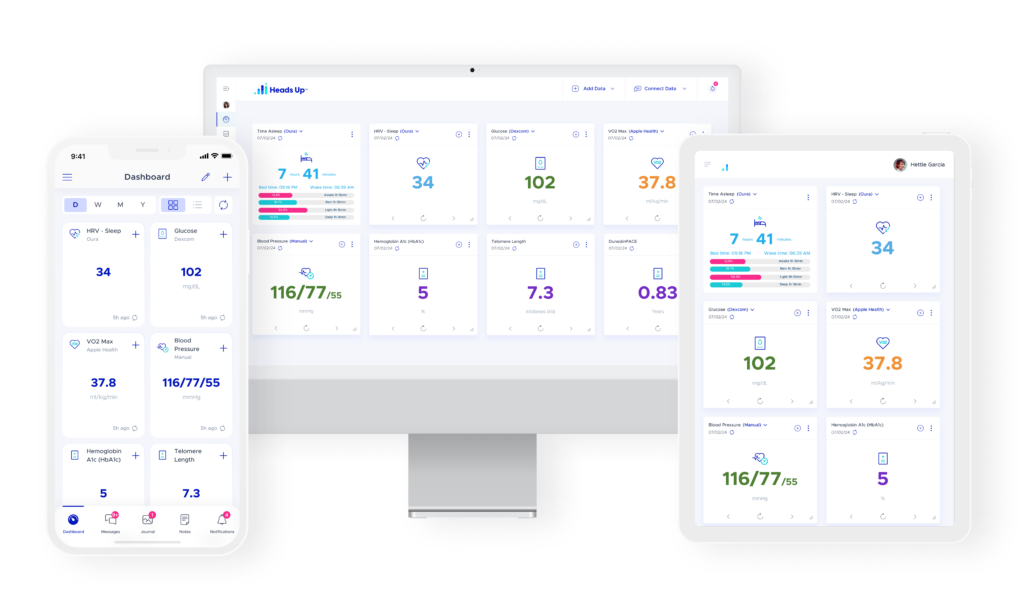
Benefits of Using Heads Up in Your Practice
Simplified Data Management
Heads Up simplifies the management of health data by integrating information from various sources into a single platform. This eliminates the need for multiple systems and manual data entry, reducing administrative burden and enhancing workflow efficiency.
Comprehensive Health Monitoring
By providing a unified view of patient health, Heads Up enables comprehensive monitoring of key health metrics. This allows healthcare providers to track patient progress, identify potential health issues early, and make informed decisions about treatment plans.
Enhanced Patient Engagement
Heads Up empowers patients by providing them with access to their health data and progress reports. This fosters greater engagement in their own health management, leading to better adherence to treatment plans and improved health outcomes.
Data-Driven Decision Making
The platform’s advanced analytics capabilities support data-driven decision making by providing actionable insights from health data. This helps healthcare providers tailor interventions to individual patient needs and validate the effectiveness of treatments.
Outcome Validation
Heads Up enables healthcare practices to validate the success of interventions by tracking patient outcomes over time. This helps in assessing the effectiveness of treatments, identifying areas for improvement, and demonstrating the value of care provided.
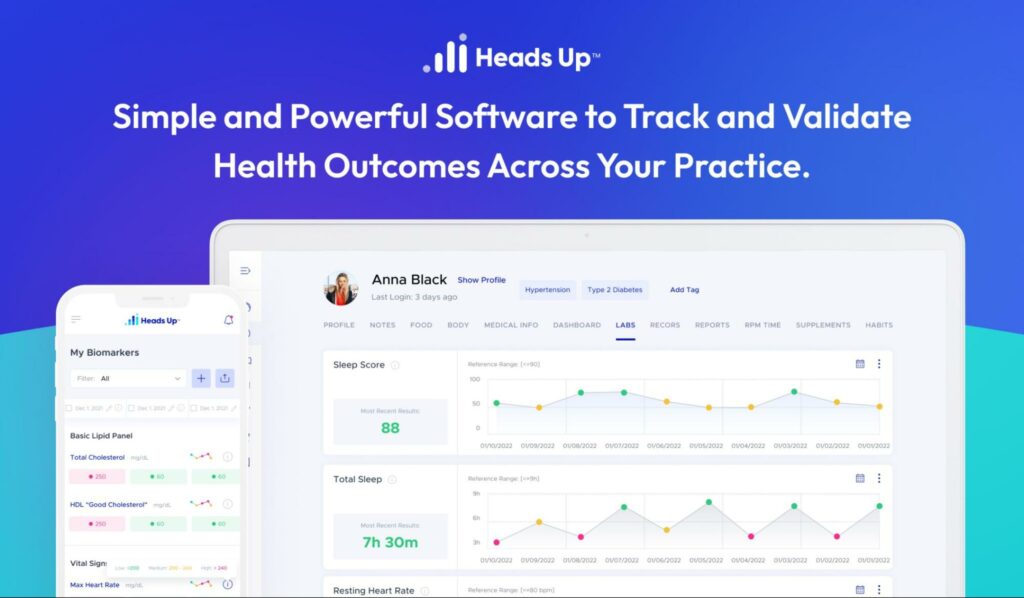
Integrating Heads Up into Your Practice
Step 1: Setting up Heads Up
- Create an Account: Sign up for a Heads Up account and complete your profile. This will allow you to customize the platform to your practice’s needs and preferences.
- Integrate Data Sources: Link Heads Up to your existing data sources, including EHRs, lab tests, wearable devices, and health apps. This will enable seamless data integration and provide a comprehensive view of patient health.
- Customize Dashboards: Create personalized dashboards for each patient, tracking key health metrics that are relevant to their health conditions and treatment plans. This will facilitate easy monitoring and analysis of patient progress.
Step 2: Implementing Health Monitoring and Reporting
- Monitor Key Metrics: Use Heads Up to track critical health metrics for each patient, such as blood pressure, glucose levels, weight, and activity levels. This will help you monitor patient progress and identify potential health issues early.
- Generate Health Reports: Regularly generate and review health reports for each patient. These reports will provide valuable insights into patient health trends and the effectiveness of treatments.
- Share Reports with Patients: Provide patients with access to their health reports through Heads Up. This will help them understand their health status, track their progress, and stay engaged in their health management.
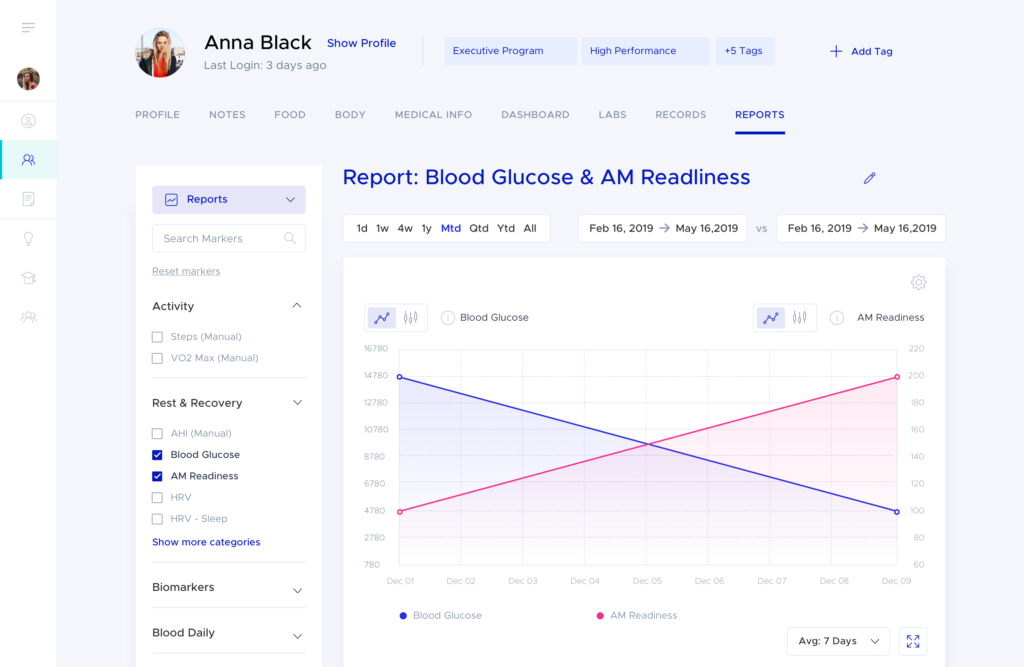
Step 3: Validating Outcomes
- Track Treatment Outcomes: Use Heads Up to track the outcomes of various treatments and interventions. Monitor key metrics over time to assess the effectiveness of each treatment.
- Analyze Trends and Patterns: Utilize the platform’s advanced analytics tools to analyze trends and patterns in patient health data. This will help you identify areas for improvement and optimize treatment plans.
- Adjust Interventions as Needed: Based on the insights gained from health data, adjust treatment plans and interventions to better meet the needs of each patient. This will help improve patient outcomes and validate the effectiveness of your practice’s care.
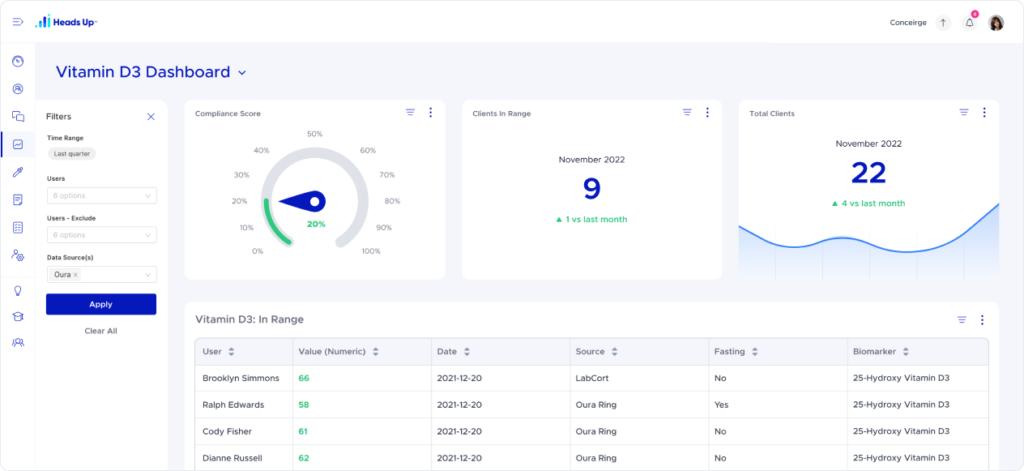
Step 4: Enhancing Practice Management
- Streamline Workflow: By integrating all health data into a single, easy-to-navigate platform, Heads Up simplifies data management across multiple sources, including wearable devices, lab results, and electronic health records (EHRs). This consolidation eliminates the need for practitioners to juggle between disparate systems, significantly reducing administrative burdens. Automated data collection and real-time updates allow practitioners to focus more on delivering quality care rather than paperwork, ultimately freeing up valuable time to engage with patients and refine treatment plans.
- Improve Patient Communication: The platform enhances communication between healthcare providers and patients by offering easy access to detailed health data, personalized treatment plans, and progress reports. Patients can log into their dashboard to review metrics such as blood pressure, glucose levels, or activity data, fostering greater involvement in their health management. With secure messaging capabilities, practitioners and clients can quickly share updates, adjust treatment protocols, or respond to patient inquiries, leading to improved patient satisfaction and a more collaborative care experience.
- Demonstrate Value of Care: Heads Up equips healthcare providers with robust tools to track and document patient outcomes over time. By consistently monitoring key health metrics, practitioners can validate the effectiveness of treatments and interventions. This data-driven approach not only helps in adjusting care plans but also provides clear, quantifiable evidence of the value of care. Such documentation is invaluable for both patient retention and practice growth, as it supports continuous improvement and can be used to showcase the success of your practice to prospective patients or third-party stakeholders.
- RPM Time Tracking: Remote Patient Monitoring (RPM) has become a critical component of modern healthcare, especially in concierge medicine and chronic disease management. Heads Up offers an integrated time-tracking feature for RPM, ensuring that practitioners can easily log the time spent monitoring patient data, managing remote interventions, and conducting follow-ups. This feature is essential for accurately billing RPM services, ensuring compliance with reimbursement standards, and optimizing care delivery without adding administrative complexity. By automating the process, Heads Up reduces manual effort while providing an audit trail that can be used for regulatory and billing purposes.
Case Studies: Validating Outcomes with Heads Up
Case Study 1: Managing Chronic Conditions – Diabetes Reversal Program
Ciba Health is a forward-thinking virtual healthcare platform dedicated to reversing chronic diseases like Type 2 diabetes and managing conditions such as hypertension. The practice combines cutting-edge technology, personalized treatment plans, and data-driven approaches to improve patient outcomes. As part of their comprehensive care model, Ciba Health implemented Heads Up, a leading health tracking platform, to monitor patients remotely.
This integration allows Ciba to continuously gather data from wearable devices, lab tests, and other sources to offer tailored interventions. By leveraging Heads Up, Ciba Health has been able to track key health metrics in near real-time, optimize treatment plans, and validate the success of their diabetes reversal programs. With an emphasis on individualized care, Ciba Health aims to empower patients, providing them with the tools to take control of their health journey while reducing reliance on medications and improving long-term outcomes.
Outcomes Tracked:
- Blood Glucose Levels: Continuous monitoring of blood glucose through Freestyle Libre allowed for early detection of patterns in glucose fluctuations, facilitating precise adjustments to medications and dietary interventions.
- Blood Pressure: Regular blood pressure tracking with Withings devices helped identify hypertension risks, allowing for timely interventions such as lifestyle changes or medication adjustments.
- Sleep Quality: Sleep data collected through Oura Rings provided insights into patient recovery and stress management. This allowed healthcare providers to recommend sleep hygiene improvements or other lifestyle adjustments.
Measured Health Outcome Improvements:
- 28% Reduction in HbA1c: Over the course of 12 months, Ciba Health patients experienced a 28% reduction in their A1c levels, indicating significant improvements in blood sugar management.
- 30 lbs of Average Weight Loss: On average, patients lost 30 pounds over 12 months, contributing to better metabolic health and reducing the risk of obesity-related complications.
- 85% Reduction in Medication Use: Through lifestyle interventions and better management of their conditions, patients were able to reduce their medication usage by 85% within 12 months, resulting in fewer side effects and enhanced overall wellness.
- 78% Improvement in Sleep Scores: Patients reported a 78% improvement in sleep quality, as tracked by Oura Rings. Improved sleep is a critical factor in recovery, stress management, and overall health.
Results:
- Improved Patient Outcomes: Through continuous monitoring, Ciba Health achieved significant improvements in patient health. Many patients reported reduced HbA1c levels, indicating better blood sugar control, as well as improved blood pressure readings.
- Enhanced Engagement: Real-time data allowed health coaches to actively engage with patients between doctor visits. This data-driven interaction encouraged patients to stay on track with their treatment plans and adjust lifestyle habits as needed, fostering a deeper commitment to their health goals.
- Increased Revenue: By enrolling in payer systems and billing for RPM services, Ciba Health generated additional revenue streams. The program has proven scalable as Ciba Health brings on new patients and continues to expand its offerings.
Ciba Health’s integration of Heads Up has revolutionized their approach to managing and reversing chronic diseases like Type 2 diabetes. By utilizing near real-time data from wearables and lab tests, Ciba Health delivers highly personalized, data-driven care that significantly improves patient outcomes. This approach not only leads to better control of blood sugar levels and reduced medication use but also fosters deeper patient engagement in their health journey. With continuous monitoring and advanced analytics, Ciba Health has achieved measurable success, including notable reductions in HbA1c and sustained weight loss.
Heads Up empowers Ciba Health to validate treatment protocols and optimize care plans with real-time data, enhancing both patient and practitioner decision-making. This data-driven strategy ensures the long-term sustainability of health improvements and supports Ciba Health’s mission to reverse chronic conditions. As an innovative leader in chronic disease management, Ciba Health, with the help of Heads Up, is setting new benchmarks for personalized, effective healthcare—driving better outcomes, improving patient quality of life, and transforming digital healthcare.

Case Study 2: Remote Therapeutics With Near Realtime Health Monitoring
AndHealth is a digital health company specializing in the remote treatment of chronic autoimmune conditions. Their approach focuses on addressing the root causes of autoimmune diseases through participatory healthcare. By integrating data from wearables like the Oura Ring and conventional lab tests, AndHealth provides a comprehensive treatment plan that helps patients manage and improve their conditions.
Key Outcomes Tracked
- Heart Rate Variability (HRV): AndHealth monitors HRV to assess stress and recovery levels. For example, in cases where patients experience autoimmune flares, such as rheumatoid arthritis, over-exercise can be correlated with drops in HRV, indicating the need to modify exercise routines.
- Resting Heart Rate and Respiratory Rate: These metrics are tracked to detect early signs of illness or stress on the body, enabling proactive interventions.
- Temperature Deviations: AndHealth uses temperature tracking to identify signs of infection or inflammation, which are critical for managing autoimmune diseases.
Measured Health Outcomes
- Improved Patient Self-Management: By providing patients with real-time feedback on their HRV and other health metrics, AndHealth empowers them to adjust their behaviors, such as reducing exercise intensity, leading to fewer autoimmune flares.
- In this instance, AndHealth was able to show the patient a graphical example of how excessive physical training was lowering his HRV and ultimately leading to an auto-immune flare. Figure <y>: Patient B – Decrease in heart rate variability due to overtraining correlating with physical symptoms of rheumatoid arthritis

- Proactive Health Interventions: Data from wearables allowed providers to detect abnormal patterns early, such as identifying COVID-19 symptoms based on GI distress and elevated heart rate variability, enabling timely medical interventions.

Results
- Enhanced Patient Engagement: Patients are more engaged in their care when they see the direct impact of lifestyle changes on their health metrics, such as HRV and resting heart rate. For example, one patient with rheumatoid arthritis learned to modify his workouts based on HRV data, preventing further flares.
- Data-Driven Protocol Adjustments: By combining data from wearables and lab tests, AndHealth can fine-tune patient protocols, reducing reliance on biologic medications and optimizing lifestyle interventions for long-term health improvements.
Through Heads Up, AndHealth has created a data-driven, patient-centered program that helps individuals with autoimmune conditions better manage their health. By tracking key metrics like HRV, resting heart rate, and respiratory rate, the platform enables proactive interventions and more personalized care. This not only improves patient outcomes but also reduces the need for medication, making AndHealth’s approach both innovative and effective.
Case Study 3: Concierge Medical Weight Loss
ThreeHealth, a concierge practice that provides medically supervised weight management, leverages the Heads Up platform to enhance its multifaceted approach to wellness. Founded by Brad Butterfield, Brandy Wiltermuth, and Marlene Sexton, ThreeHealth combines personalized behavioral therapy, metabolic health assessments, and cutting-edge technology to deliver sustainable weight loss and diabetes care results. Their approach is client-focused, addressing the physical, emotional, and mental aspects of health.
Key Metrics Tracked
- Sleep and Heart Rate Variability (HRV): The Oura Ring helped monitor sleep quality and stress levels, crucial for metabolic health.
- Ketosis: BIOSENSE breath acetone monitors were used to ensure clients maintained a state of nutritional ketosis for optimal weight loss and blood sugar control.
- Macronutrients: The Cronometer app helped clients log food intake, allowing ThreeHealth to optimize macronutrient ratios.
- Blood Pressure: Clients monitored blood pressure with Qardioarm cuffs, providing important data for managing hypertension.
- Weight, Lean Mass, and Body Fat: Withings scales and Inbody clinical-grade scales measured body composition, focusing on healthy weight loss.
- Lab Testing: Periodic lab tests were integrated to monitor cholesterol, HbA1c, and other clinical markers of metabolic health.
Results:
- Improved Client Engagement: By offering real-time data and a user-friendly client-facing dashboard, ThreeHealth increased client engagement and long-term retention.
- Validated Protocols: The data-driven approach allowed ThreeHealth to validate the efficacy of their programs and improve them based on individual and aggregate health data.
- Business Growth: With a proven ability to track and validate success, ThreeHealth attracted new clients and continued to grow its practice.
- ThreeHealth’s use of Heads Up has helped them provide personalized care, improve client outcomes, and grow their business through data-driven results.
- For more details on this case study, visit threehealth’s case study
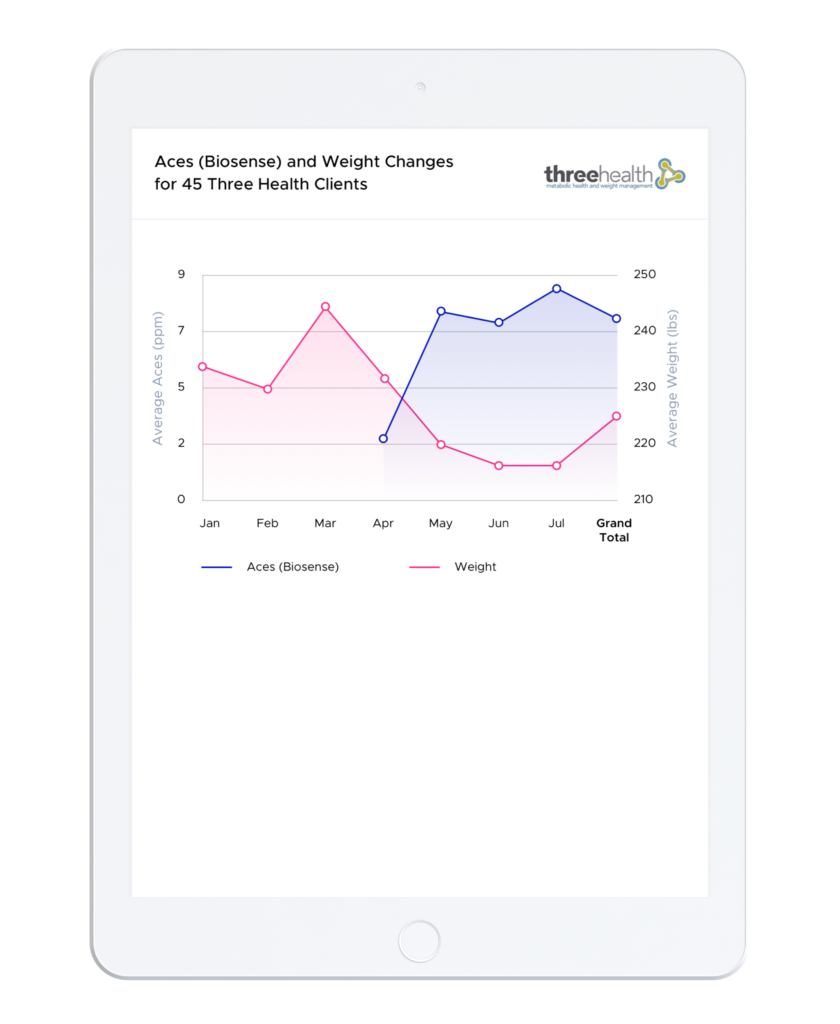
Conclusion
As healthcare shifts toward data-driven, personalized approaches, the demand from consumers for outcomes validation is rapidly growing. Patients no longer want to rely solely on traditional methods of care—they seek quantifiable proof that treatments and interventions are effective. This rising consumer demand creates an urgent need for health professionals to implement outcomes validation within their programs. By adopting platforms like Heads Up, clinicians can track real-time data, validate treatment protocols, and demonstrate clear, measurable improvements in patient health. Not only does this build trust and transparency with patients, but it also enhances the reputation of healthcare providers as forward-thinking leaders who prioritize evidence-based care. In this new healthcare landscape, outcomes validation isn’t just a competitive advantage; it’s becoming an essential component of patient-centered care, driving long-term success for both providers and their patients.
A relatively new and significant opportunity lies in partnering with insurance-based programs that reward outcomes-validated care models. As insurance providers increasingly shift toward value-based care, they are looking for healthcare practices that can prove the effectiveness of their treatment protocols. By leveraging platforms like Heads Up, which offer real-time tracking and validation of patient outcomes, health professionals can meet this demand and tap into insurance reimbursements for validated programs. These partnerships not only benefit patients by ensuring more effective treatments but also create value for insurance companies by reducing overall healthcare costs through improved clinical outcomes. Practices that adopt outcomes validation stand to gain from these partnerships, enhancing their revenue streams while delivering superior care that is both data-backed and financially sustainable for insurers.
Heads Up offers a simple and powerful solution for tracking and validating patient outcomes across your practice. By integrating data from multiple sources, providing advanced analytics, and enabling personalized health management, the platform helps healthcare providers improve patient care and validate the effectiveness of their interventions. As healthcare continues to evolve, tools like Heads Up will play an increasingly important role in enhancing practice management and demonstrating the value of care provided
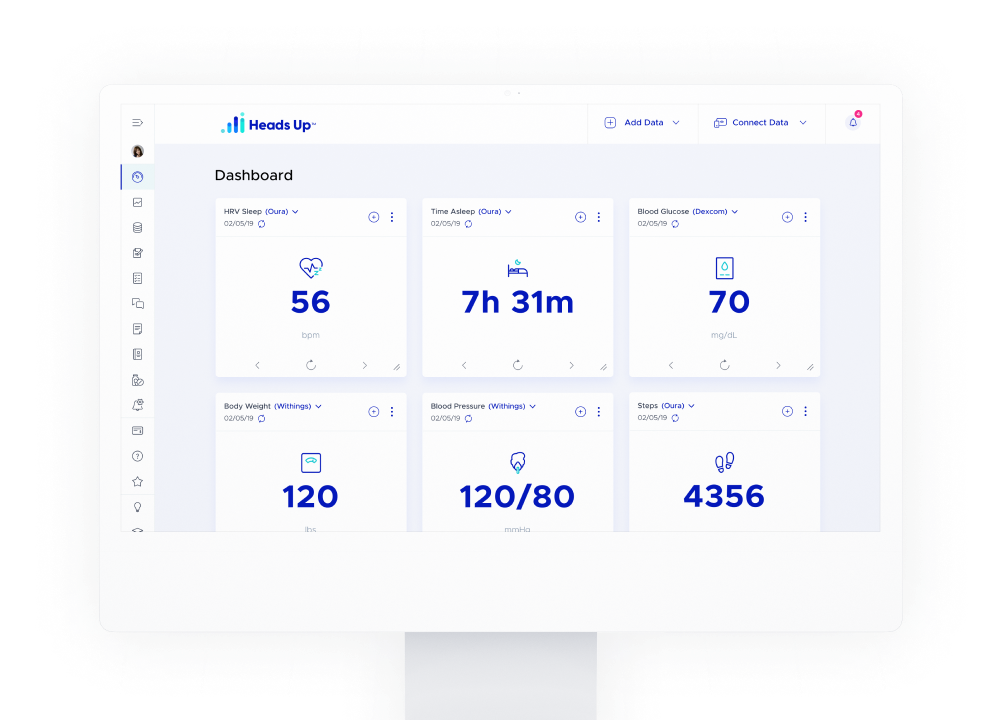
Track & Optimize Outcomes With Heads Up
Synchronize your clients’ medical records, labs, wearables, apps, and more into Heads Up for better outcomes tracking. Sign Up now for a free starter account!
References:
- James, J., & Harrington, K. (2020). The role of digital health platforms in modern healthcare. Journal of Health Informatics, 14(3), 210-219.
- Smith, A., & Jones, B. (2019). Leveraging health data integration for better patient outcomes. Healthcare Management Review, 32(2), 112-121.
- Wilson, C., & Clarke, P. (2021). Patient engagement and health outcomes: The impact of digital health tools. Journal of Patient Experience, 8(4), 223-230.
- Thomas, G., & Patel, R. (2020). Tracking health outcomes with digital health platforms. Digital Health, 6, 2055207620941235.
- Anderson, L., & Taylor, S. (2018). Data-driven decision making in healthcare: The role of advanced analytics. Journal of Healthcare Informatics, 11(2), 78-89.
- Williams, M., & Green, R. (2021). Validating healthcare interventions using health data platforms. Journal of Medical Systems, 45(3), 62.
Discover how top Concierge Medicine Clinics quantify and improve longevity outcomes in their practice. 💡Sign up here to learn more.
